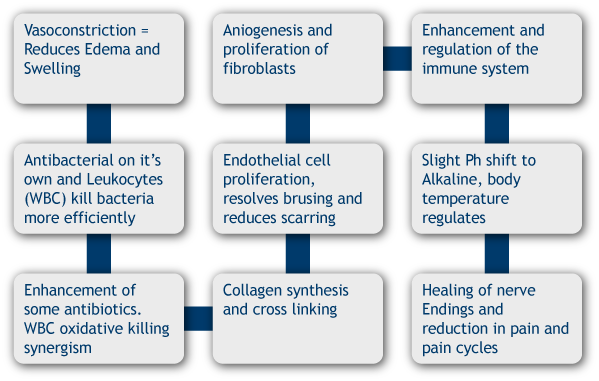
Physical Therapists
| Conditions in Which HBO is a Useful Adjunct to Rehabilitation |
- Stroke
- Peripheral Vascular disease
- Head injury
- Toxic encephalopathy, e.g., CO poisoning
- Multiple Sclerosis
- Paraplegia
- Sports injuries
- Coronary heart disease
|
Physical therapy is an essential part of rehabilitation in many chronic diseases and in dealing with the sequelae of Cerebrovascular insufficiency and myocardial ischemia, as well as in many neurological disabilities. Physical exercise in various forms is an important component of physical therapy and preventative medicine programs. Hyperbaric oxygenation (HBO) has also proven useful in many medical problems, such as infections and gangrene. There has been very little work on the combination of HBO and physical exercise.
Rehabilitation is a multidisciplinary undertaking to aid the functional recovery of patients and their integration into society. It has an important role to play in all branches of medicine, and particularly so in neurological disorders; rehabilitation is not only physical but psychological as well.
Rehabilitation uses the techniques of physical medicine, and currently these include ultraviolet light, electrotherapy, and ultrasound. HBO can be added to these. Traditionally, rehabilitation therapy has followed recovery from an acute illness. In some cases rehabilitation measures should already start during the acute phase of an illness and should also aim to preventing further recurrences of the disease process.
Role of HBO in Rehabilitation
The combination of HBO (1.5 ATA) with physical therapy has the following advantages.
Biochemical improvement. Excess concentrations of lactate, pyruvate, and ammonia, particularly in older people, and detrimental to fitness and contribute to fatigue, and there is significant increase of these substances during exercise. HBO reduces this.
Increase of capacity for strenuous exercise. HBO allows more strenuous and prolonged exercise than is possible under normobaric conditions. This is of particular advantage in the rehabilitation of chronic ischemic heart disease patients, for treatment of mild hypertension, and for lowering blood lipids.
Neurological disorders. HBO is beneficial in the acute stages of head injury with cerebral edema, and the evidence for HBO therapy in the rehabilitation of the head-injury patient is summarized in Table 35.3. Rehabilitation starts when the patient has regained consciousness and can be moved. The usefulness of HBO in the management of spinal cord injury is described in Chapter 20, and its role in intensive rehabilitation is summarized in Table 35.4.
HBO has been found useful in the rehabilitation of patients with postoperative neurological deficits. In many neurological conditions, where the effect of HBO on the course of the disease remains uncertain, rehabilitation is greatly facilitated by conducting physical therapy during an HBO session, for example, in cases of multiple sclerosis and muscular dystrophy. The physical performance capacity of neurologically disabled patients is thus improved.
Many patients, when following closely the prescribed protocol for Hyperbaric Oxygen Therapy notice the following cumulative benefits from the oxygen:

| Table 35.3 |
| Role of HBO in the Rehabilitation of Head Injury |
- Decreases cerebral edema in acute stage
- Decreases spasticity
- Accelerates recovery
- Improves cognitive function recovery in combination with brain jogging
- Relieves post-traumatic headaches
|
| Table 35.4 |
| HBO in Rehabilitation of Paraplegia |
- Relieves spasticity
- Improves vital capacity
- Increases exercise capacity
- Decreases hyperammonemia resulting from exhaustive exercise
|
Myocardial infarction. Exercise therapy is popular for the rehabilitation of patients who have recovered from acute episodes. Most of the beneficial effects of HBO in cardiovascular disease are associated with increased capacity for physical exercise. This is particularly true in cases with hypertension, where exercise therapy has been shown to reduce blood pressure. The role of HBO in rehabilitation of myocardial ischemia is shown in Table 35.5.
| Table 35.5 |
| HBO in Rehabilitation of Myocardial Ischemia |
- Improves exercise capacity
- Prevents recurrence of ischemic episodes
- Decreases BP in hypertensives
- Long-term use reverses atherosclerosis
|
Peripheral vascular disease. Exercise therapy for patients with ischemic leg pain is facilitated by the use of HBO in situations where it is possible to extend the limit of performance by the use of normobaric oxygen. A treadmill controlled by the patient can be installed in a hyperbaric chamber for training therapy for those suffering ischemic leg pain. The benefits of exercise under HBO conditions are summarized in Table 35.6.
| Table 35.6 |
| Benefits of Exercise under HBO in Patients with Ischemic Leg Pain |
- Increases painless exercise capacity
- Relieves pain both at rest and on activity
- Reduces biochemical disturbances resulting from exercise of ischemic muscles
- Counteracts the vasoconstricting effect of HBO
- Improvement is maintained after cessation of HBO when the ceiling effect is reached
|
K.K. Jain, Textbook of Hyperbaric Medicine (pages 432-433). Copyright © 2009 by Hogrefe & Huber Publishers.
Click on the link below to see what conditions related to your medical field are treatable with Hyperbarics.
View Conditions
Contact
Contraindications
To see a PDF file detailing reasons why you might not prescribe HBOT, click below.
Contraindications (PDF)

